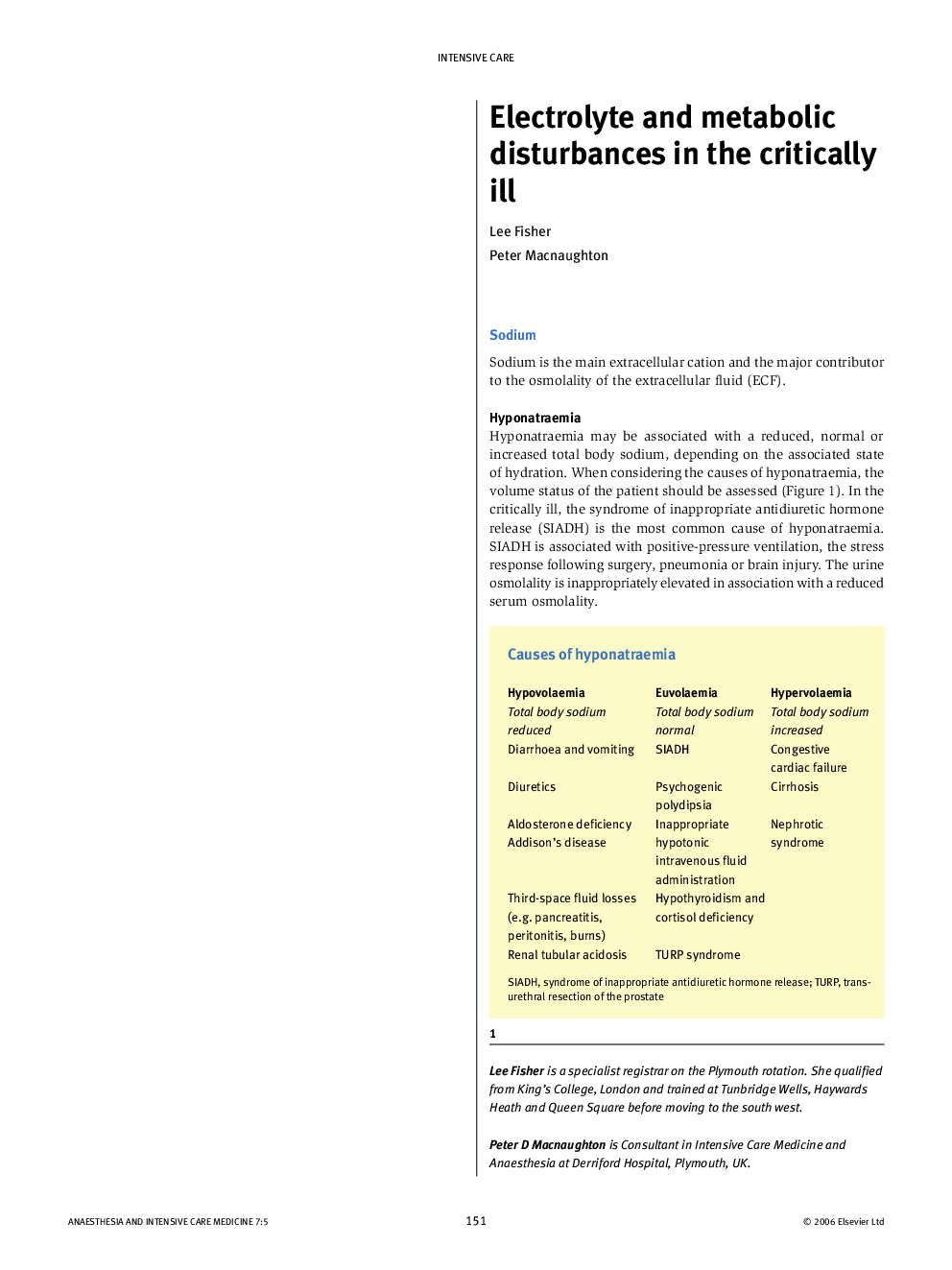| کد مقاله | کد نشریه | سال انتشار | مقاله انگلیسی | نسخه تمام متن |
|---|---|---|---|---|
| 2743278 | 1148660 | 2006 | 4 صفحه PDF | دانلود رایگان |

Electrolyte and metabolic disturbances are common in the critically ill patient. Hyponatraemia in the most frequent abnormality and is often caused by SIADH. Sodium should be corrected at a rate of < 10 mmol/day. Hypernatraemia is caused by a loss of free water, including diabetes insipidus after head injury. Treatment is replacement of water and DDAVP in DI. Disorders of potassium cause cardiac arrhythmias, including cardiac arrest. In severe hypokalaemia IV, KCl may be given at a max rate of 40 mmol/hour. Treatment of hyperkalaemia includes calcium chloride, then redistributing and ultimately removing potassium. Disorders of magnesium cause cardiac arrhythmias, muscle weakness and fits. Calcium is required by excitatory processes such as neuromuscular conduction and contraction. Hypercalcaemia is treated by rehydration with normal saline then excretion with bisphosphonates. Phosphate is an intracellular cation essential for cellular processes. Hyperphosphataemia may need treatment with haemofiltration as it is usually caused by renal failure. Metabolic disturbances include disorders of (1) hypothalamic-pituitary-adrenal axis, the most important being acute adrenal insufficiency. Treatment is replacement steroids; (2) thyroid emergencies, including thyroid storm, which if not recognized and treated has a high mortality, and myxoedema coma treated with replacement thyroid hormones; (3) diabetic emergencies, including DKA and HONK. DKA arises due to an absolute insulin deficiency causing hyperglycaemia and ketogenesis. This leads to dehydration, hypovolaemia and a metabolic acidosis due to impaired tissue perfusion. HONK is associated with profound hyperglycaemia, dehydration without ketosis. It develops more insidiously in an older age group and has a higher mortality.
Journal: Anaesthesia & Intensive Care Medicine - Volume 7, Issue 5, 1 May 2006, Pages 151-154